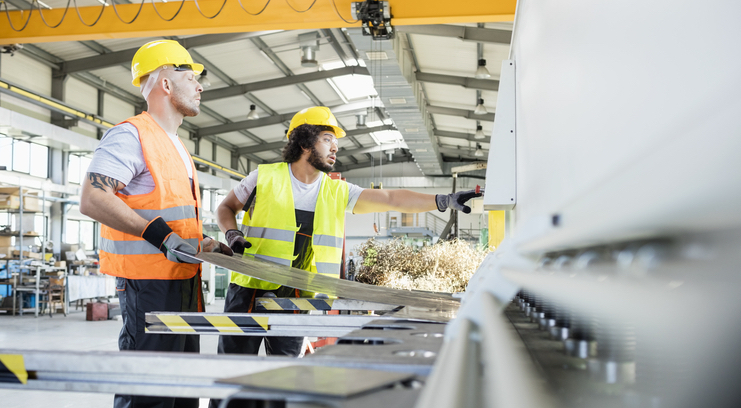Business confidence among SME manufacturers stabilised in the quarter to April, according to the CBI’s latest SME Trends survey, ending a run of five consecutive quarters of declining sentiment.
The survey paints a picture of tepid demand during the quarter to April, with output contracting for the third consecutive quarter and new orders broadly unchanged through the quarter. However, SME manufacturers expect both output and new orders to pick up in the three months to July.
There were signs that some of the challenges that faced the UK’s SME manufacturing sector in 2022 continued to ease. The share of firms reporting that shortages of skilled labour and shortages of materials or components could constrain output over the next three months fell back further from last year’s highs (while remaining above average). The share citing concerns over orders or sales rose to its highest level since July 2021 (but remained below average).
The survey suggests that both cost and price growth eased over the quarter, slowing from 2022’s record rates, though remaining historically strong. SMEs expect growth in average unit costs to slow further in the next three months, but to continue to outpace growth in domestic selling prices, which are expected to increase at a similar rate to last quarter.
Investment intentions were mixed, with SME manufacturers expecting to reduce spending in buildings in the year ahead and to keep spending on plant and machinery flat. Spending on innovation, and on training and retraining is expected to rise.
Key findings:
- Business sentiment was broadly unchanged in the three months to April, having fallen steadily since the quarter to January 2022 (balance of +2% from -11% in the quarter to January 2023). However, export optimism fell at a broadly similar pace to the previous quarter (-9% from -7%)
- Output volumes declined marginally and at the same pace as in January (balance of -5%, from -5% in January). Output is expected to pick up in the coming quarter (+13%).
- Orders or sales were the most commonly cited constraint on output over the next three months (61% of respondents; below the long-run average of 73%), followed by skilled labour (35%; average of 18%), and materials or components (29%; average of 12%).
- The volume of total new orders was broadly unchanged in the quarter to April (balance of +2%, from -3% in January), but is expected to grow in the three months to July (+16%).
- Growth in average unit costs eased for the fourth quarter in a row (balance of +61% from +71%) and is expected to ease further in the next quarter (+44%).
- Growth in domestic selling prices continued to ease from 2022’s record highs (balance of +33%, from +38% in January), with a similar rate of increase expected next quarter (+34%).
- Employment numbers edged up in the three months to April (balance of +8%, from +6%), with SMEs expecting another moderate rise in the next three months (+13%).



